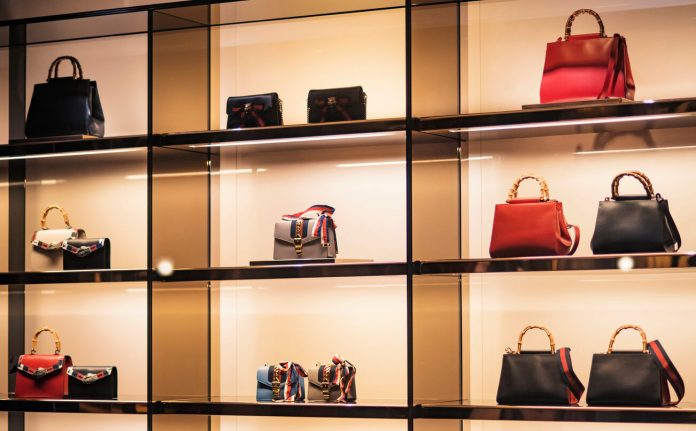As luxury brands seek to protect their symbolic capital and prestige, entering resale markets is a strategy to be carefully considered before diving into, JN Kapferer examines the challenges and opportunities for luxury brands to enter the Second-hand market, and offers operational suggestions for brands that decide to do so.
Buying second-hand luxury products is not a new idea. In jewelry markets for example, historical figures often sold family jewels or precious gems if the family fortunes ran low. In the watch sector, specific stores and websites focus on vintage models and appeal to collectors of reputed Patek items or Rolex Daytona, who seek the previously owned versions and also demand confirmations of their authenticity. Selling pre-owned luxury cars is a prominent element of the revenue model of luxury automobile dealers. The first clients registered on waiting lists for the newest Ferrari model often already own one and expect to sell it back to their local dealer. This option to buy back used cars and sell new ones has various benefits for the dealers, in that it establishes a seamless, continuous client relationship; helps control sales regionally; and makes the brand available to new clients who might not have the budget to afford the latest model or who do not want to suffer the typical 20 percent drop in value in their first year of ownership. To attract such buyers, luxury car dealers refurbish the pre-owned cars carefully, then sell them with a guarantee and certification, offering the same service excellence they provide to buyers of new cars.
Yet these exceptions prove the rule: The personal luxury goods sector largely ignores what happens to its new products after they get sold to clients, other than ensuring their quality. By definition, luxury brands offer superlative after-sales service and repair any products sold, regardless of its age. Hermes markets its heritage by promising to be able to trace all saddles sold since the creation of the company in 1854, so that any required repair can be informed by the details specific to the manufacture of that unique product. Yet few brands attend to or participate in the resale of their products by the original buyers, especially as e-commerce platforms dedicated to the business of selling pre-owned products have made such exchanges easier and more numerous. These platforms are manifold: eBay and Alibaba, as well as specialised e-retailers such as Vestiaire Collective, The RealReal, Vinted, Collector Square, Edit Second Hand, Rewind Vintage, Decades in Los Angeles, and Didier Ludot. The RealReal reached $400 million in sales in 2017; Vestiaire Collective has a presence in 50 countries. Although the platforms perform similar functions, their business models vary. For example, eBay and Alibaba provide peer-to-peer marketplaces, with no guarantees about the source of the products their vendors sell. As a result, these platforms feature a seemingly uncontrolled rash of fake and counterfeit products, representing the lower end of the pre-owned luxury market.
[ms-protect-content id=”9932″]In contrast, dedicated e-retailers that seek to establish a viable second-hand personal luxury market offer authentication services to guarantee the origin of each product they sell. The RealReal, which works on a consignment model, employs a contingent of 60 professional authenticators; even the company’s name aims to communicate that it provides “a safe place to buy second-hand luxury.” It also has opened two physical stores, in New York and Los Angeles, and it regularly hosts pop-up stores to sell second-hand luxury fashion products offline. Such efforts appear successful; Bain & Co. estimates that sales in the second-hand personal luxury market attained $18 billion in 2017. As the CEO of Audemars Piguet explains, “Second hand is the next big business of the watchmaking industry! So far everyone is selling second-hand products, but the luxury brands don’t: this is a pure commercial nonsense” (Reuters, 2018). As this quote highlights, luxury brands mainly have left this second-hand market to third parties, despite their constant need to achieve sustained growth and support their parent luxury groups, which are listed on stock exchanges. Stockholders demand new sources of revenues and high profitability. Thus it may come as no surprise that in March 2018, the CEO of Kering (the world’s second-largest luxury group) announced a new partnership with The RealReal, using Yves Saint Laurent as a test brand for the collaboration.
Re-commerce: the boom of the pre-owned luxury product sales
Growing demand for pre-owned luxury products is no fad; it reflects structural changes to our modern society, and it appears likely to become a normal way to buy for younger consumers. Such changes represent a challenge to luxury brands that historically have promoted their products by citing their flawless, long-lasting quality and even promising, at least for some exceptional products, that their price would go up with time, so the return on any investment in a luxury item was virtually guaranteed.
These distinct views require careful considerations of the terminology we use. Second-hand, pre-owned, or pre-loved products are any items that have been used previously, with the assumption that they can be purchased at a lower price than the new version required (e.g., websites advertise up to 90 percent off retail); they also can support a sustainable lifestyle (Turunen and Lepämaa-Leskinen, 2015). Second-hand products are bought to be used. But we also distinguish the category of vintage products, whose appeal is tied to their evocation of some epoch or era; they are nearly museum pieces, with value beyond the nostalgia they provide. Finally, collectors’ demands stem from their pleasure in possessing a set of products that reflect the buyer’s identity in some way, without any intention of using them. All three categories offer the thrill of the hunt as a pivotal consumer experience (Carrigan et al., 2013).
Accordingly, various factors have prompted the rise of a pre-owned market for personal luxury products, that is, items that the consumer wears or carries. We highlight five notable influences. First, luxury does not mean the same thing that it once did. Originally, luxury was limited to a very small group of people – nobles, patricians, and the wealthiest in society. This limitation remains in place for some products, such as yachts, real estate, automobiles (Rolls-Royce sold just 3362 cars in 50 countries in 2017), and art. But personal luxuries do not follow this model; they are never inaccessible as long as clients have an intense desire to own them and sufficient resources to afford them. Accordingly, the personal luxury market has become dominated by luxury mega-brands, such as Chanel, Louis Vuitton, Dior, Hermès, Bulgari, Prada, Armani, Cartier, and Rolex. They operate in world capitals and online, achieving considerable public awareness through their visibility in luxury malls and High Streets. Their prices still act as a social stratifier (Kapferer and Bastien 2012), so potential new clients – especially those from Generation Y (i.e., millennials) and Generation Z (born after 2000) – can use these brands to affirm their identities and boost their self-concept while still conforming to the norms of their peer group. To circumvent the price barrier, some consumers buy fakes or even hyperfakes, which are remarkably similar to the originals, if not actual branded products stolen from overruns of licensed producers. Other consumers find a solution in the dedicated websites that offer second-hand, off-price, famous items, along with certificates of authenticity and excellent service. These retailers lower the entry price threshold for luxury purchases, without creating the ethical quandaries associated with buying fakes. They even offer the added benefit of the pleasure of finding a good deal.
Second, consumers in Generations Y and Z, often referred to as digital natives, are highly tech savvy. They have always used the Internet to make purchases; social networks provide them with insights into where to find the best deals for specifically desired products. As these consumers age, this habit likely will persist. Because they enjoy buying and selling online, they will feed both the demand and the supply of luxury second-hand platforms.
Third, a recent international study, across generations and countries (Kapferer and Michaut, 2018), shows that millennials express the greatest perceived contradiction between sustainable values and luxury. In some sense, luxury is inherently sustainable, because it promises lasting quality. Thus Patek advertises that no one owns its watches but instead just holds on to them before passing them down to the next generation. Hermès promises the best leather and craftsmanship in its bags. Such concepts distinguish luxury from fashion, because a consumer would buy a Hermès bag and keep it forever. But modern definitions of status and keeping up with peers require luxury clients to buy a new bag each year or so. This era of ephemeral luxury arises not due to a lack of quality but rather in response to the fashionisation of luxury. Luxury and fashion used to embrace widely divergent business models, but to sustain their growth and meet consumers’ constant demands for new offerings, most luxury brands produce more collections each year or season. Consumers would need vast wardrobe spaces to stock all the items the luxury brands offer. But this model also can create guilt related to hoarding so many lasting products. This key development is likely a powerful driver of the creation of second-hand luxury websites: to relieve a sense of guilt. People can feel better about paying for luxury items if they know they can sell them, entering into a circular economy with just a click.
Fourth, no brand, even the most luxurious, can ignore sustainability challenges. Although the effects of sustainability initiatives on the luxury sector and luxury clients have been relatively limited, some examples arise, such as when social networks light up with warnings that some luxury brand, which should be exemplary in all its actions, has acted unethically. The resulting firestorm can spread quickly throughout social networks and the media, potentially leading to boycotts and significant damage to the brand’s carefully earned reputation for excellence. Furthermore, in the capitalist systems in which luxury groups operate, financial experts scrutinise their operations and strategies, and they hate any reputation risks, so the brands must be proactive and ready for the tipping point at which consumers and stakeholders demand they achieve sustainability.
Fifth, according to a recent Deloitte U.K. (2017) study, 20.5% of millennials have bought luxury items for a special occasion and 18.5% to treat themselves. These purchases for special moments imply the concept of “ephemeral luxury”. When these moments are repeated, so are luxury purchases. But these digital natives also are value conscious, so they seize opportunities to engage in a circular economy: When an older item needs replacing, they readily sell it. This development might signal the end of the appeal of lasting possession, as leveraged by luxury brands such as Patek Philippe for decades. Millennial culture embraces selling and buying on the Internet, and their focus on sustainability promises a real financial benefit, because they can make money from their past purchases – especially of limited editions that systematically create an aftermarket. This behaviour represents the new normal. Instead of possessing an ever-growing number of items, which seems wasteful, consumers keep only a few of them, the most cherished, and sell the rest. All luxury clients thus might start behaving like art collectors: buying and reselling, expecting a return on their investments by engaging in a circular economy.
The resale value, true measure of the luxury brand pricing power
Thus far, personal luxury brands have stayed out of this vibrant second-hand market. They have allowed third parties develop it and acquire millions of customers, who in turn trust the retailers and appreciate both the smooth customer experience (e.g., shopping at home) and the good prices. The RealReal attracts an estimated eight million customers.
In separate but potentially relevant channels, the Kering Group bought the internationally famous Christies, and LVMH once possessed Phillips, a British auction house. They used these business units to sell some pre-owned luxury pieces, and the prices reached in these auctions helped reaffirm the brand legend. For example, in May 2017, an Hermès Himalaya Niloticus Crocodile Diamond Birkin bag brought $380,000 at the Hong Kong Christies. The impact of this price on the symbolic supremacy of Hermès reflects the reputation of the auction house. As this example reveals, luxury brands’ interest in pre-owned sales stems from the need to control their pricing power.
First, they share some similarities with art markets. Luxury brands constantly seek to protect their symbolic capital and prestige, which provide the basis for their pricing power. As the CEO of the Moser luxury brand acknowledges, “Our responsibility is to ensure the highest long term value of the products we sell” (New York Times, 2018). Just as art galleries need to keep control over the resale prices of young artists’ paintings, luxury brands must ensure that some of their products gain value, long after they were first purchased. In contrast, the unregulated luxury resale market drives prices downward, with potential effects on brand perceptions.
Why luxury brands have been reluctant to re-commerce
Owned by listed groups, luxury brands are under pressure. They always search for new sources of revenue, to reach the consistent growth objectives imposed by their parent groups or investors.
Despite these impetuses though, luxury brands remain reluctant to engage in second-hand markets for cultural reasons. Historically, the brands have taken the names of their creators – craftspeople, artisans, and artists. They worked to create exemplary products for their best clients. In this sense, luxury still promises newness, even if in pursuit of producing great classics. Clients dream of buying a legendary Jaeger Lecoultre Reverso watch, and that product must be perfect, intact, and new. Second-hand objects are less appealing, because they cannot offer this pristine newness or “virginity.” For some clients, a second-hand product will always seem “contaminated” by the person who possessed it before they did. Such a sense of intimacy might not be an issue if the previous owner were a celebrity, but such celebrity effects are relatively rare, except in some auctions.
Another hurdle is the risk of a loss of perceived exclusivity, which is different from traditional considerations of scarcity. We live in an era of abundant rarity (Kapferer 2014): Diamonds may be forever, but they are not scarce. Existing reserves can fulfill demand for more than a century. Rather, the key legitimising factor is “perceived exclusivity”, which signals that the luxury brands choose their preferred clients, rather than the other way around. The high price of a Dior bag is discriminatory, as is the annual entrance fee for select golf clubs. The goal is to keep the doors closed to most applicants. Entering the second-hand market would be a move in the opposite direction, seeking new clients, with less purchasing power, instead of dedicating all attention to the very important clients – the happy few who contribute to brand profits, as long as they sense that the brand is theirs and grants them a feeling of being special. The brand loses appeal for these clients if they discover a leather bag, similar to their own, on the arm of excursionists who rarely purchase luxury. It is the luxury brands’ task to help its clients continue to feel special, not reduce their distinctiveness.
A third relevant factor is the cannibalisation risk. Focussing on pre-owned products may cause the brand to cannibalise sales of its new products and collections. Personal luxury brands devote substantial effort at the beginning of each season to sell as many new products as possible, at full price. These two divergent streams of revenue seem unlikely to develop together.
Finally, we note an organisational hurdle. The second-hand business is logistically challenging, requiring different approaches to authentication, price estimation, and delivery. It represents a separate business that largely takes place online, so a luxury brand would need to learn entirely new operations to enter it. Some of them might rely on existing second-hand sellers as subcontractors, but in that case, the brand needs to find a way to differentiate its offerings and value proposition from everything else listed on third parties’ sites. Luxury brands can succeed in this market only if they have a better value proposition, which may stem from a weakness of second-hand platforms – trust. Normally only the brands can authenticate their products with complete certainty, so they might make this claim to instill doubt about whether third-party actors can do so. Yet they still confront latent experiential risks (e.g., learning how to welcome clients, how to help them pick items at home) and valuation risks. What if the resale price of a specific item does not satisfy a luxury brand client? This dissatisfaction then might be focussed on the brand itself, instead of the retailer. Last but not least, it faces operational difficulties, fundamentally related to how and where to position second-hand offerings. Should a brand create second-hand stores or devote space in its own stores to second-hand items? Such positioning also reflects demand and supply considerations, such that brands might not be able to fulfill all demand for second-hand items. In contrast, the specialised websites enjoy an abundance of choice as multibrand resellers.
In favour of entering this business directly
Even considering these challenges, several arguments for entering the second-hand market directly suggest ways that luxury brands could compete with existing third-party actors. Primarily, they have a competitive advantage. In luxury – as in art or any other unregulated market – trust is fundamental. The lack of trust and fears of buying a fake have drastically limited the development of second-hand markets in China. When second-hand products offer pristine quality and are sold by their original brand, it evokes strong trust, as well as an opportunity to experience great luxury service and participate in the brand community. Trust thus represents a clear opportunity for luxury brands: They can suppress the consumption risk inherent to any uncontrolled grey market.
Furthermore, luxury brands need to engage younger generations immediately. If these younger consumers differ from older ones – as most evidence suggests – it is up to the brands to adapt to their expectations, including an embrace of the circular economy, sustainability, and ethics.
Finally, expanding the customer base and harvesting lucrative revenues is an approach that aligns with the financial equation of the luxury business model, because brands can attract clients who might not be able to afford new luxury products. This argument must be balanced with a strategic question though: Does the brand need these new clients, or should it devote all its efforts to very important clients and ensure that they continue to feel special and engaged with the brand? This challenging balance implies a return to questions that luxury brands faced in the past, when the democratisation of luxury was the dominant trend.
Conclusion and instructions for use
The luxury sector appears to be moving ahead, albeit prudently. Kering is collaborating with The RealReal to sell Yves Saint Laurent–branded products. This platform also has collaborated with Stella McCartney’s sustainable brand to promote a circular economy. Neither case represents a direct entry strategy but rather involves a strategic alliance. Furthermore, these two luxury brands are specific and distinctive, suggesting that there is no straightforward answer to the overall question raised in this article. One size does not fit all. The best strategy depends on the nature of the luxury brand and its strategy. We thus offer some operational suggestions for adopting a direct second-hand strategy for brands that decide to do so.
For which brands?
Louis Vuitton is not Coach. From its start, Coach has been positioned as an accessible luxury, and it realises a significant percentage of its sales in outlets. Thus, a dedicated “Coach Classics” second-hand store would not surprise many consumers. Instead, it might raise interest in this brand, by establishing its classic offerings as items that have resisted depreciation. Similarly, Ralph Lauren already has invented its own historical legend. But an edgy brand such as Balenciaga might not realise benefits from investing time, energy, and money in a direct operation linked to second-hand sales.
Yves Saint Laurent’s first-mover status also is no surprise, because it has long embraced a disruptive reputation. The brand actively seeks to engage millennials and accordingly has achieved remarkable sales growth, by appealing to new clientele who seek a disruptive identity. Such an approach likely is less appropriate for Dior, with its carefully defended position at the apex of the luxury fashion hierarchy.
We argue that luxury entry brands or premium brands should be the first to capture the opportunities of the second-hand market. Accordingly, Tag-Heuer has announced that the second-hand market will be its next big target (New York Times, 2018), though the date of entry into this market remains to be determined. With its reputation as a sustainable luxury fashion brand, Stella McCartney’s collaboration with a well-reputed third-party actor also seems reasonable, because doing so increases the diffusion of the circular economy.
Branding operations
A key consideration is whether to use a distinct brand for the second-hand operations. Saks Fifth Avenue established Saks Off Fifth Avenue stores to sell outlet items; Aston Martin created Aston Martin Timeless to facilitate sales of certified pre-owned cars, giving clients the “unmatched confidence that your Aston Martin has been carefully curated”. This option thus appears effective, and luxury brands should consider a similar approach.
Pricing
Pricing is a challenge. Second-hand customers exhibit distinct demographics, psychographics, and expectations. They are value oriented, and price is a strong motivation (cf. buyers of vintage items or collectors). Yet luxury brands cannot engage in price wars with third-party platforms; doing so would only prompt a vicious, downward cycle. Rather, the prices of second-hand products sold by the brands should be higher, because a pre-owned product sold by the brand itself guarantees authenticity and remarkable preservation, so it justifies a high price – just as consumers expect from a prestigious luxury brand.
[/ms-protect-content]About the Author
 Jean-Noël Kapferer, Ph.D Kellogg Business School (USA), HEC Paris Emeritus Professor, is a research fellow at INSEEC Luxury (France). Worldly reputed expert on brand management, he has published many reference books – The Luxury Strategy (with his co-author V.Bastien, former CEO of L.Vuitton), How luxury Brands Grow Yet Remain Rare, The New Strategic Brand Management – and recently co-authored Advances in Luxury Brand Management. He holds executive seminars in Europe, the U.S.A., China, Japan, Korea and is a frequent contributor to LBI Luxury Business Institute (Seoul, Shanghai).
Jean-Noël Kapferer, Ph.D Kellogg Business School (USA), HEC Paris Emeritus Professor, is a research fellow at INSEEC Luxury (France). Worldly reputed expert on brand management, he has published many reference books – The Luxury Strategy (with his co-author V.Bastien, former CEO of L.Vuitton), How luxury Brands Grow Yet Remain Rare, The New Strategic Brand Management – and recently co-authored Advances in Luxury Brand Management. He holds executive seminars in Europe, the U.S.A., China, Japan, Korea and is a frequent contributor to LBI Luxury Business Institute (Seoul, Shanghai).





































